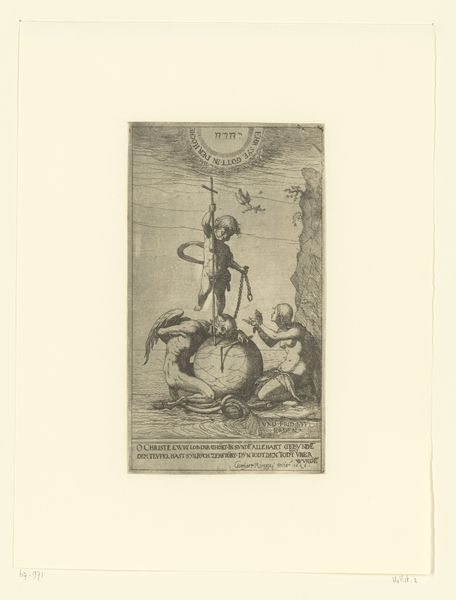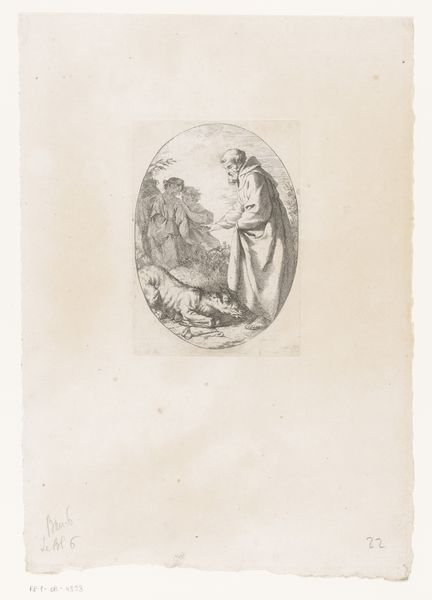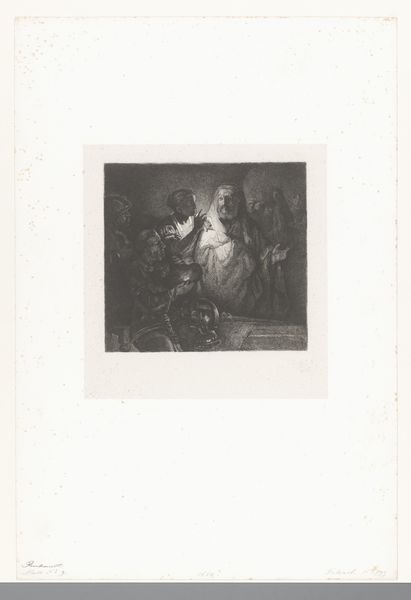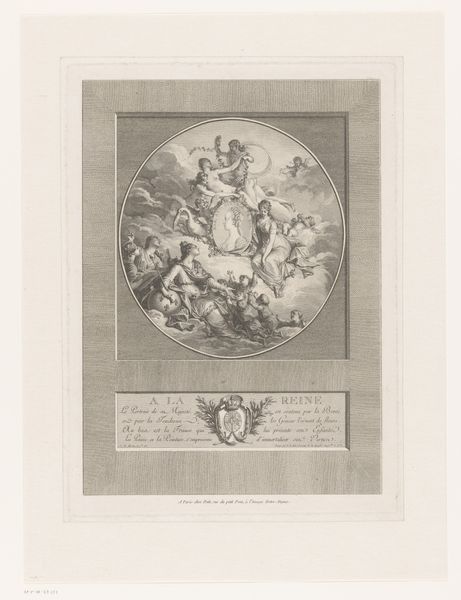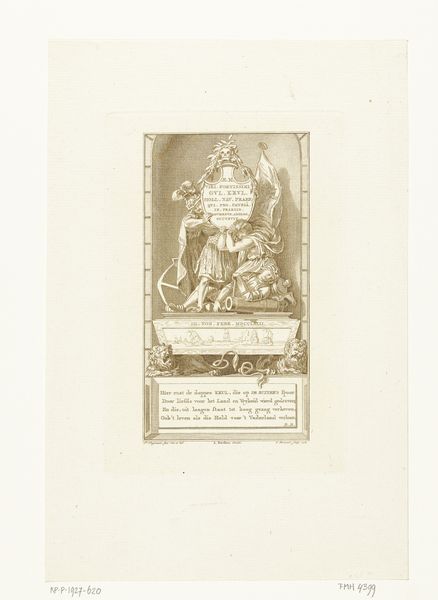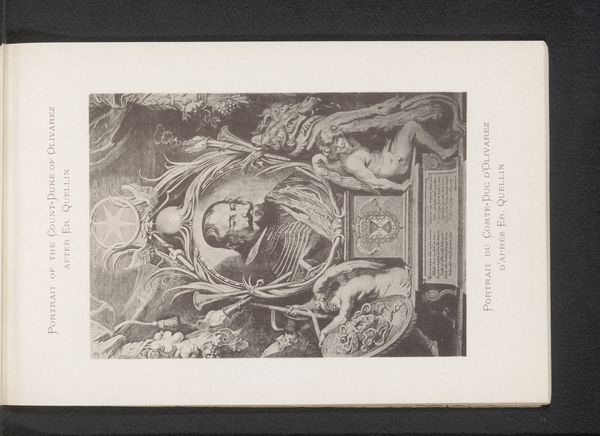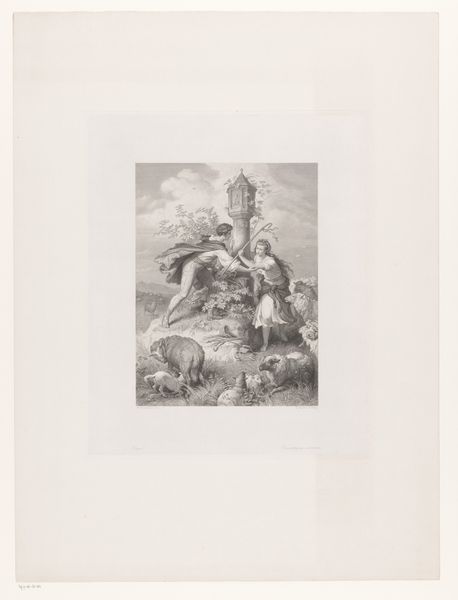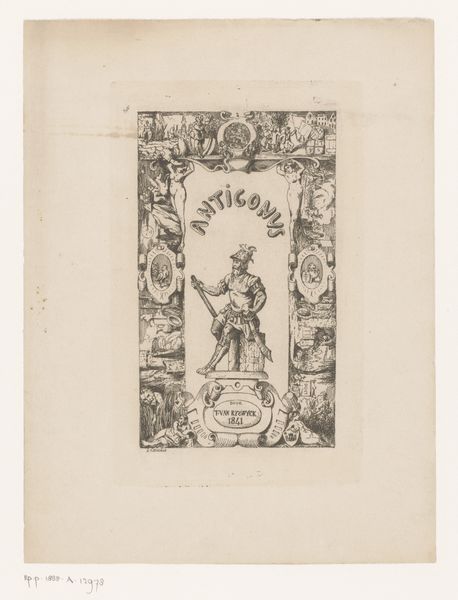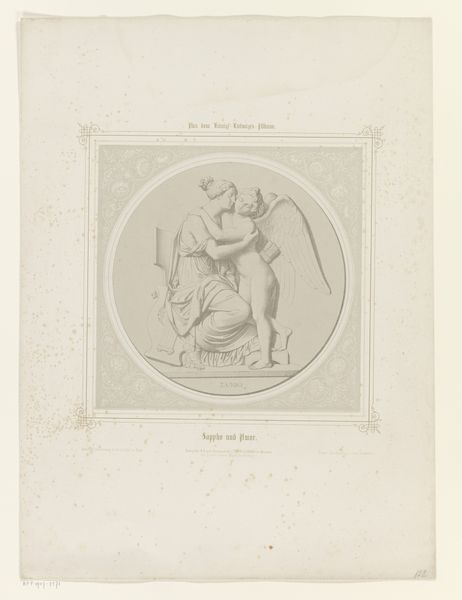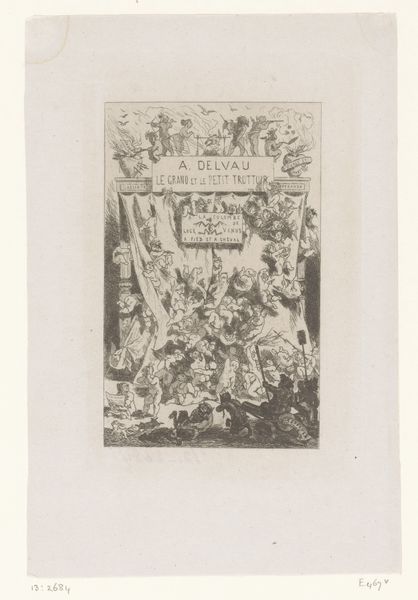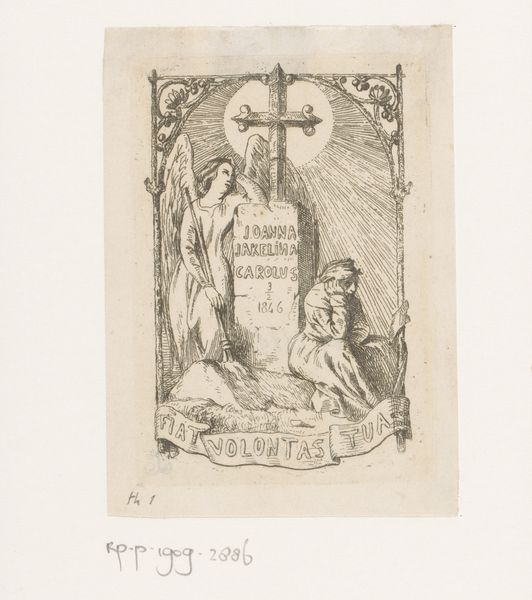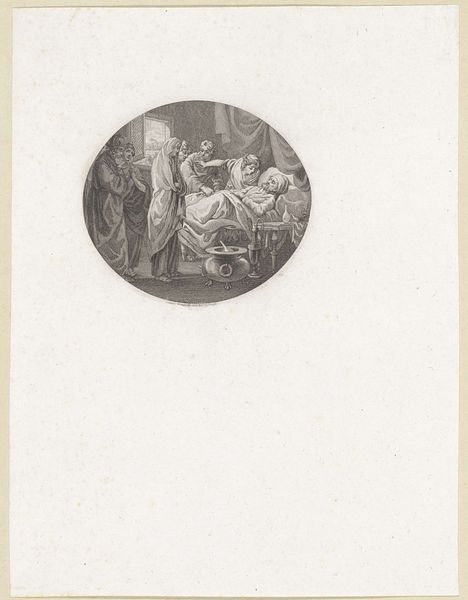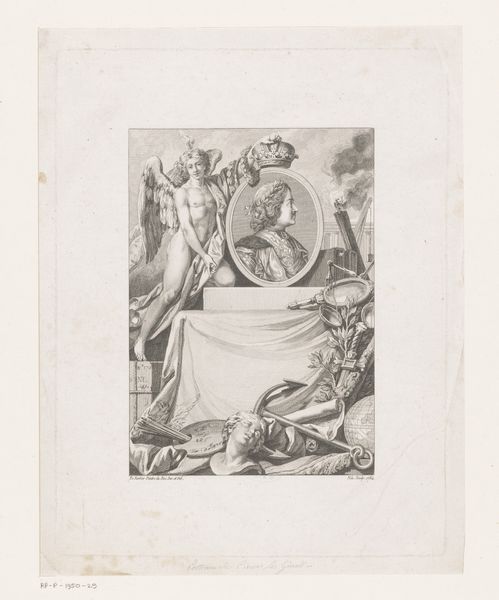
Medaillon met portret van Lodewijk XVI van Frankrijk omringd door Justitia, Wijsheid, Overvloed en Waarheid 1774
0:00
0:00
noellemire
Rijksmuseum
Dimensions: height 346 mm, width 253 mm
Copyright: Rijks Museum: Open Domain
Curator: The Rijksmuseum holds this striking medallion print titled "Medaillon met portret van Lodewijk XVI van Frankrijk omringd door Justitia, Wijsheid, Overvloed en Waarheid," created in 1774 by Noël Le Mire. What are your initial impressions? Editor: It's dense. So many symbolic figures packed into that circular frame. The stark monochrome intensifies the drama—a very loaded image, I'd say. Curator: Indeed. As an engraving, the process demands meticulous labor, carefully transferring an image through a matrix onto paper, which in this instance constructs the propaganda surrounding Louis XVI early in his reign. It also speaks to broader trends, the commodification and consumption of images bolstering political power. Editor: Right. The imagery is fascinating considering what's to come. The personifications of Justice, Wisdom, Abundance, and Truth are interesting choices surrounding a portrait of Louis XVI. What’s particularly curious is its context, the image acting as a promise of what his rule could embody for the people. It served as a very public image, given its creation as a widely-distributed print. Curator: Precisely. This wasn’t a unique art object, meant for private contemplation; this was made for circulation, to reinforce specific notions about kingship, circulating among different strata of society through various venues such as print shops and public display. Think about the physical labor—the skilled artisan carefully wielding tools to carve and reproduce images aligned to Louis' envisioned reputation. Editor: I’m curious about how the classical imagery worked to support Louis XVI. Allegorical representation, like Justice, communicates complex ideological meanings through a codified vocabulary accessible to those within court circles and also, to a degree, more widely. But even still, was this visual language truly effective in shaping public opinion, given looming economic and social unrest? Curator: We can analyze how printmakers mobilized visual culture for political legitimization through repeated forms, contributing to the construction, the manufacturing, of a public persona for the King of France, even as socio-political undercurrents pointed toward massive future upheaval and revolt. It highlights how the production of this single object had broader implications within the regime of representation itself. Editor: It serves as a potent reminder of art’s entanglement within the political fabric of pre-revolutionary France. Considering how it all ended, there's a deep irony here that makes you consider the real power such portraits wield. Curator: I agree. The image operates almost as a social artifact, its composition of forms hinting at deeper societal fault lines beneath this royal projection. Editor: I’m taking away the precarity of power and imagery from this piece.
Comments
No comments
Be the first to comment and join the conversation on the ultimate creative platform.
